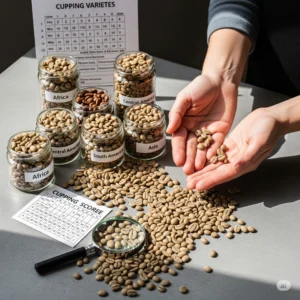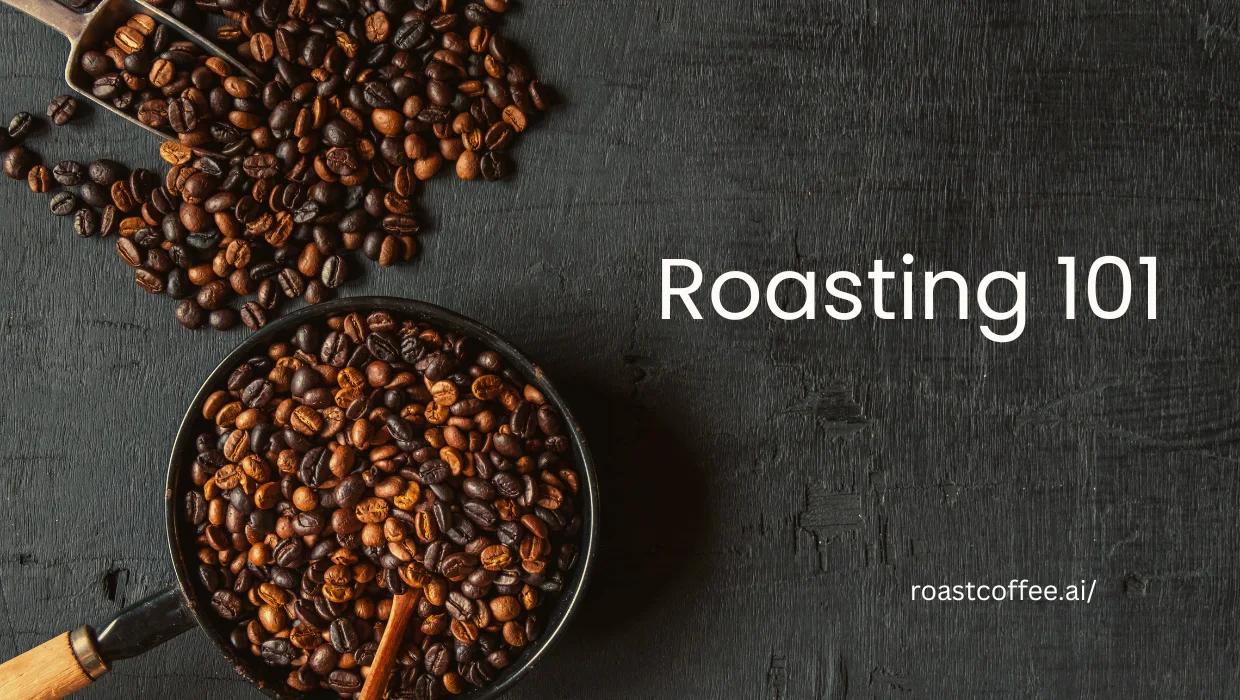When I first got into roasting, I was obsessed with gadgets and roast curves. But what I didn’t realize until much later was this: the green bean you start with sets the stage for everything.
You can have the best roaster and a perfect profile, but if your green beans aren’t great, you’ll never get that sweet, syrupy, balanced cup. This post will help you choose the right beans from the start, whether you’re new to roasting or refining your specific origin profiles.

Origins: Where Your Coffee Comes From (and Why It Matters)
Coffee’s flavor is deeply tied to its geography. The country, region, and even altitude directly affect the taste. Here’s a quick overview:
- Africa (e.g., Ethiopia, Kenya): Bright, fruity, floral notes; often lighter-bodied.
- Central America (e.g., Guatemala, Costa Rica): Balanced, chocolatey, nutty profiles.
- South America (e.g., Colombia, Brazil): Smooth, creamy, crowd-pleasers.
- Asia (e.g., Indonesia, India): Earthy, spicy, bold—great for espresso.
Tip: Try small samplers from different regions to discover what you like.
This video explains how soil, climate, and processing styles in each origin impact the cup, with great visual storytelling about the journey from farm to cup: Why Coffee Origin Matters.
Varieties: The Hidden Genetics Behind Flavor
Like wine grapes, coffee has different varieties (or cultivars). Their genetics influence flavor, disease resistance, and how they handle roasting.
Common Varieties to Know:
- Bourbon: Sweet, rounded acidity, classic flavor.
- Typica: Smooth, clean cup, often considered a foundational variety.
- SL28 / SL34 (Kenya): Juicy, bright, complex.
- Gesha: Floral, tea-like, delicate—but often expensive!
Why it matters: Some varieties shine in light roasts, while others excel in espresso. Don’t overlook this!
For a fantastic primer on major Arabica varieties, how they taste, and where they grow best, which is especially helpful for identifying what you’re actually roasting, check out: Understanding Coffee Varieties.
Quality: How to Know What’s Worth Roasting
Knowing how to assess green bean quality is crucial:
Key Grading Terms to Know:
- Specialty Grade: 80+ cupping score, very few defects.
- Commercial Grade: Less expensive, more defects.
- Screen Size: Larger beans often roast more evenly (look for 17+ for drum roasters).
Processing Method:
- Washed: Clean, crisp, acidic.
- Natural: Fruity, funky, heavier body.
- Honey: Somewhere in between, often sweet and balanced.
Watch for: Moisture content, defect count, and how transparent the seller is with information.
This video breaks down how to evaluate green coffee quality—defects, moisture, screen size, and more—and is great for those buying from online retailers: How to Choose Quality Green Beans.
Where I Buy (and What I Look For)
When I shop for green beans, here’s what I always check:
- Transparent origin and variety info
- Cupping notes or roast recommendations
- Moisture content (ideal: 10–12%)
- Packaging (resealable, vacuum-packed, etc.)
- Sampler availability!
For a super practical beginner’s guide covering online sources, what to avoid, and how to sample without wasting money, watch: Beginner’s Guide to Buying Green Coffee.
Summary & Your Next Step
Green beans are your foundation. By understanding origin, choosing the right variety, and buying high-quality, properly processed beans, you set yourself up for success—no matter how advanced your roaster is.
Your next step: Grab a few 1 lb samplers from different origins and roast them with the same profile. You’ll be amazed how different the cups turn out.
Next Up: Curious about roasting profiles by origin or variety? Explore my Roast Profiles page where we’ll dive into specific roast strategies for different beans, or ask RoastBot, our custom-trained chatbot, for help dialing one in based on your beans! We’ll also be sharing more content on troubleshooting roast issues and deep dives into coffee processing methods.


